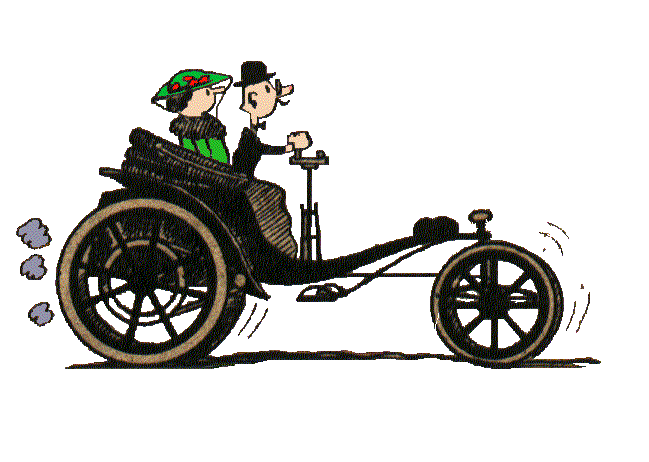London to Brighton Run
The world famous "London to Brighton Run" is held every year on the first Sunday in November. The run is open to any car built on or before 31 December 1904. With around five hundred cars all built before 1905 it is the worlds largest gathering of old cars.
There are many different London to Brighton Run's for cars, lorries, bikes etc. However the original and most famous is the Bonhams Veteran Car Run made famous by the 1953 film Genevieve.
In 1896 the Locomotives on Highways Act came into force, which raised the speed limit for 'light locomotives' from 4 miles per hour to 14 mph and abolished the requirement to be preceded by a man on foot. The need for the man on foot to carry a red flag had actually been abolished in 1878, but the Locomotive Act was still widely known as the 'Red Flag Act' and a red flag was symbolically destroyed by Lord Winchilsea at the start of the November 14 1896 run.
The 1896 event was a demonstration that the automobile had come to stay. The organisers' instructions stated: "Owners and drivers should remember that motor cars are on trial in England and that any rashness or carelessness might injure the industry in this country." Only 14 of the 33 starters reached Brighton, although it was hinted that one car was taken by train and covered with mud before crossing the finishing line!

1953 film Genevieve

The '1896 Panhard' owned by John Bryce which won the 1927 event
"Old Crocks Run to Brighton"
After the 1896 event, there was a few anniversary runs organised but these soon stopped. It was not until 1927 when the editor of The Daily Sketch newspaper suggested that a re-enactment of the 1896 run be made. It was jointly organised by The Daily Sketch and The Autocar magazine and took place on Sunday 13 November 1927. The assembly point was Victoria Embankment in London and the route followed as closely as possible the original route to Brighton.
The Daily Sketch has called the event "Old Crocks Run to Brighton", in total 51 'Old Crocks' entered all of which were at last 21 years old - making the youngest car 1906.
The oldest car - which won the run - was not, in fact, the oldest car. The '1896 Panhard' owned by John Bryce was actually an 1899 Clément Panhard.
This was not some tick by Mr. Bryce to win the run but a genuine mistake. At that time there was no Veteran Car Club to officially dates these cars.
Today's event is not a race. The cars are limited to an average speed of 20 mph and the only reward for a successful run is a Bronze Medal (awarded to all who reach Brighton) and a hot cup of tea!
Run attracts entrants from all over the world, with the biggest overseas entry coming from the United States, followed by France. It is impossible to calculate an exact value for the 450 or so veteran cars (some of them have never actually been sold), but organizers estimate that the entry list is worth at least £40 million
Next London to Brighton
The next London to Brighton Run is on Sunday 5th November 2023.
London to Brighton in the Media
A selection media articles describing the London to Brighton Run.
7 minute cine movie of the London to Brighton Run from the 1950s (no sould)
A simply stunning piece of film of the 2017 Bonhams London to Brighton Veteran Car Run supported by Hiscox
BBC Radio programme from the 1970s describing the London to Brighton (40 minutes)
